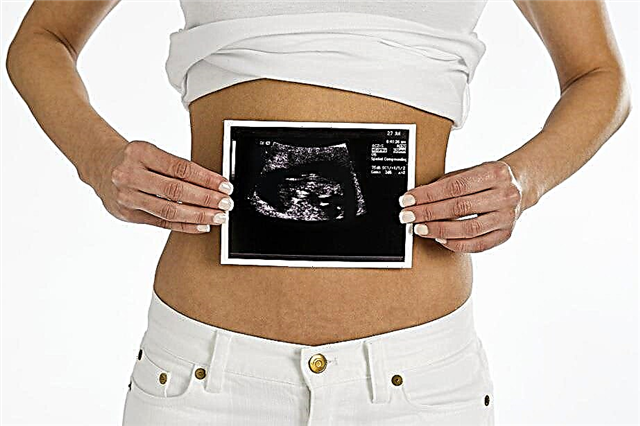
Children older than 4-6 months can no longer be fed only with mother's milk or formula. They need food products that can provide the growing body with valuable vitamins and minerals. In this regard, fruit complementary foods are especially important, which usually start with apples, pears and bananas. When can a child be given a pomegranate, is this fruit useful for children, is it not dangerous due to the presence of seeds and how to properly introduce it into a children's diet?

Benefit
Pomegranate is rich in organic acids, amino acids, polyphenols, vitamins (especially ascorbic acid), pectins, minerals and many other valuable compounds.
The use of pomegranate has the following effect on the human body:
- Strengthens the immune system and increases resistance to colds.
- Helps fight viruses.
- It has a diuretic and choleretic effect.
- Increases hemoglobin levels.
- Affects blood clotting.
- Strengthens the gums and has antiseptic properties, which is important for gingivitis, sore throat or stomatitis.
- Improves appetite.
- Tones up the nervous system.
- Has an astringent effect.
Harm
If pomegranate juice is consumed undiluted, it can damage the mucous membrane of the digestive tract, as well as tooth enamel. That is why pomegranate juice should be drunk diluted with water, and after drinking the juice it is recommended to brush your teeth.
You should also make sure that the child does not accidentally eat a piece of pomegranate peel, since it contains alkaloids that are dangerous for the crumbs.

Contraindications
Pomegranate juice should not be drunk when:
- Pancreatitis;
- Gastritis;
- Peptic ulcer;
- Allergies to pomegranate;
- Constipation;
- Oxaluria.
At what age can you give in complementary foods?
In the absence of a tendency to allergies, the child can be given pomegranate from the age of one. Babies over 1 year old are allowed to taste the juice of this fruit diluted with water, starting with a teaspoon.
Pomegranate seeds, due to the presence of seeds in them, are allowed to be given to children over 3 years old. It is also recommended to postpone acquaintance with pomegranate juice until the age of three in case of allergic diseases in a child.
In what form is it better to give to a one-year-old child?
Pomegranate for children 1-3 years old is best given in the form of juice. It is important to remember to keep in moderation and not to give such a product every day.

Give your baby only sweet fruits, because sour pomegranate juice contains too many acids that can damage the baby's stomach.
In the next video, you will learn how you can quickly clean a pomegranate.
Can pomegranate be eaten with seeds and what is the likelihood of appendicitis?
Many children eat pomegranate without spitting out the seeds, which causes anxiety for parents, as there is a theory linking the use of this fruit with seeds with the appearance of appendicitis.
Doctors say that such a connection has not been proven, and the difficult-to-digest food, which is pomegranate seeds, is more likely to cause not an inflammation of the appendix, but an intussusception of the intestine. Although, this pathology is caused not only by pomegranate seeds eaten in large quantities, but also by an excess of legumes and seeds in the diet.
In small amounts, pomegranate seeds are harmless and come out unchanged with feces. Only a significant amount of eaten bones is a danger to the health of children. Therefore, when giving a baby pomegranate, parents should still take into account the child's age and the immaturity of the baby's intestines.

How to make pomegranate juice?
It is very easy to make pomegranate juice at home using a citrus press. After cutting the pomegranate into two halves, use a press to squeeze the juice out of them. You should not pass pomegranates through an electric juicer, as you will get a large amount of cake and a small amount of juice.
The second option for getting juice is to use your hands on the fruit. You can knead the fruit with your fingers or forcefully roll it across the table. As a result, the seeds under the skin will become crushed, and all you have to do is make a small hole in the skin of the pomegranate and squeeze the juice into a glass.
It is even easier to extract juice from pomegranate seeds by peeling the fruit from the skin and putting the seeds in a sieve. Press on them from above with a crush, and collect the juice flowing down from below and strain through cheesecloth.
For information on how to make pomegranate juice in 2 minutes, see the next video.
Usage rates
Drinking pomegranate juice is recommended twice a week, while it should be diluted with water 1 to 1. Children from one to three years can drink up to 100 ml of diluted pomegranate juice per day. For babies 3-7 years old, the daily dose of such a useful drink is increased to 200-250 ml, and for children over 7 years old - up to 400 ml.
Eating the pulp of a ripe pomegranate is also recommended no more than 2 times a week. For children from three to seven years old, it is enough to eat from 1/4 to 1/2 of a pomegranate at a time. A child over 7 years of age can eat the whole fruit 1-2 times a week.

Tips for choosing
Baby pomegranates are best purchased from the supermarket, not from a street stall. Choose fruit that is evenly dark red or brownish in color. The pomegranate should be heavy, with a whole skin without spots, and firm to the touch. Soft areas of the fruit indicate damage during transport or rotting. A ripe pomegranate stalk will be dry.
If you pick up a light fruit with a not dried stalk and an even smooth skin, and when you click on the pomegranate, the sound will be dull (a ripe fruit should have a sound with a metallic tint), then such a pomegranate is immature. If cracks are visible on the peel, then you have an overripe fruit in front of you.

Find out if your child's weight is normal using the following calculator.



